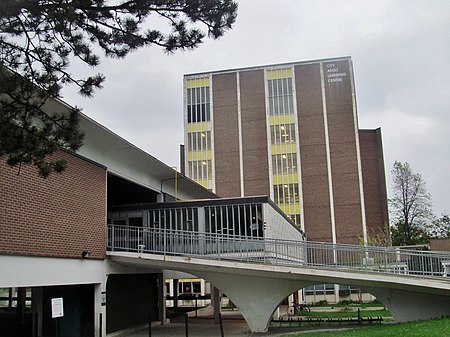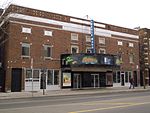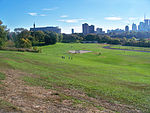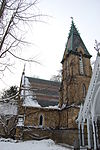City Adult Learning Centre
1963 establishments in OntarioAdult educationAlternative educationEducational institutions established in 1963High schools in Toronto ... and 1 more
Schools in the TDSB

City Adult Learning Centre (CALC), formerly known as Parkway Vocational School and Parkview Secondary School is an adult high school serving the Riverdale community in Toronto, Ontario, Canada, overseen by the Toronto District School Board. Prior to 1998, it was part of the Toronto Board of Education. From the beginning, the school offered vocational and technical courses. It has since evolved into a conventional adult high school offering EdVance (18–20) and adult (21 and over) classes.
Excerpt from the Wikipedia article City Adult Learning Centre (License: CC BY-SA 3.0, Authors, Images).City Adult Learning Centre
Danforth Avenue, Toronto
Geographical coordinates (GPS) Address Nearby Places Show on map
Geographical coordinates (GPS)
| Latitude | Longitude |
|---|---|
| N 43.674972 ° | E -79.360174 ° |
Address
Danforth Avenue 1
M4K 1M8 Toronto
Ontario, Canada
Open on Google Maps










